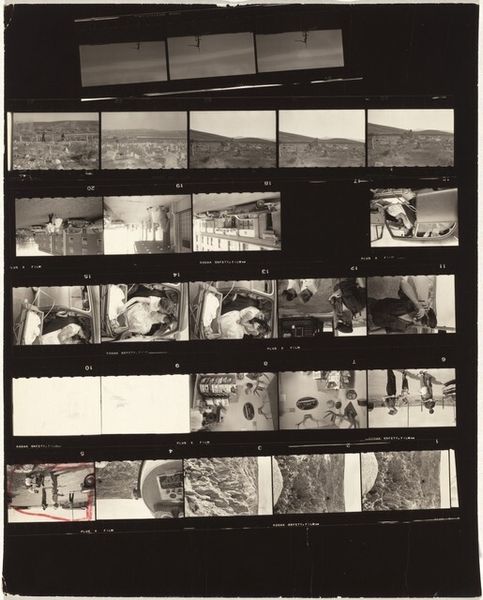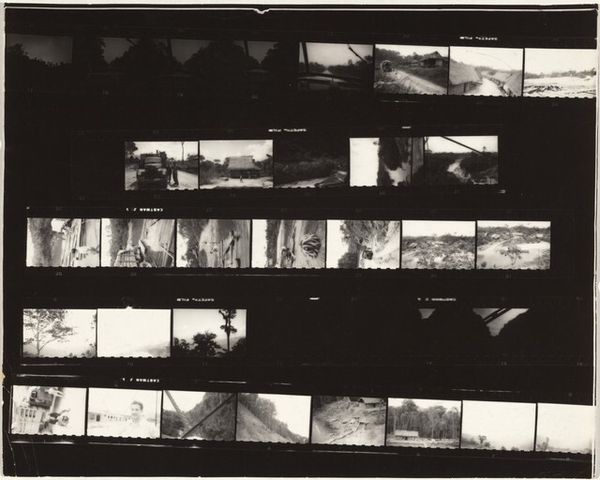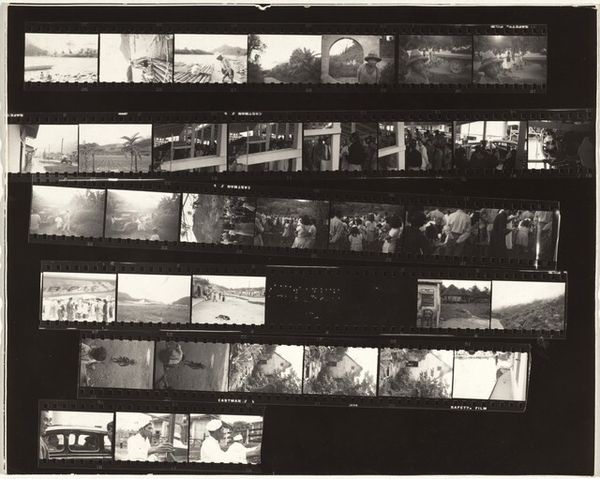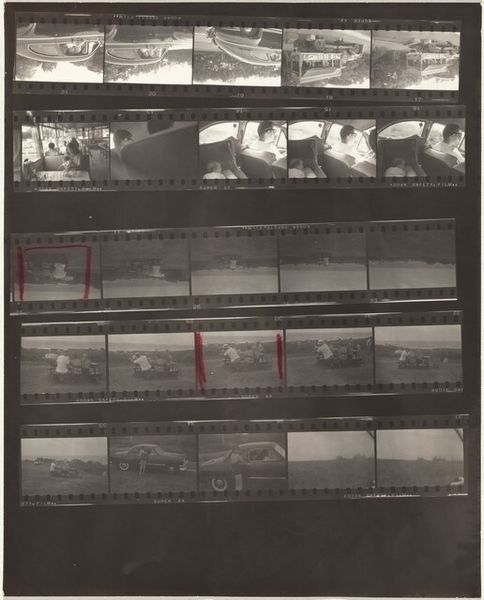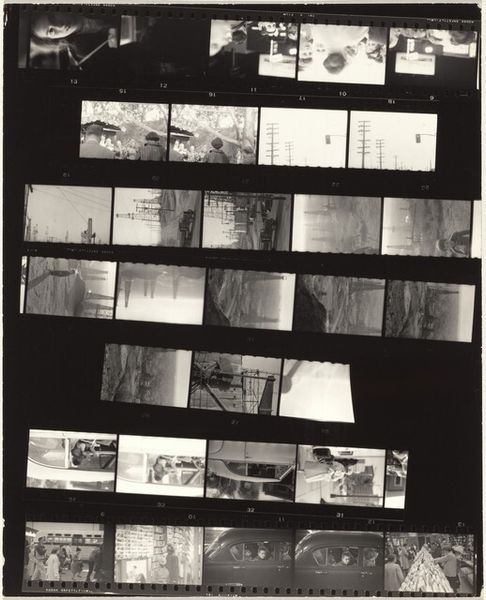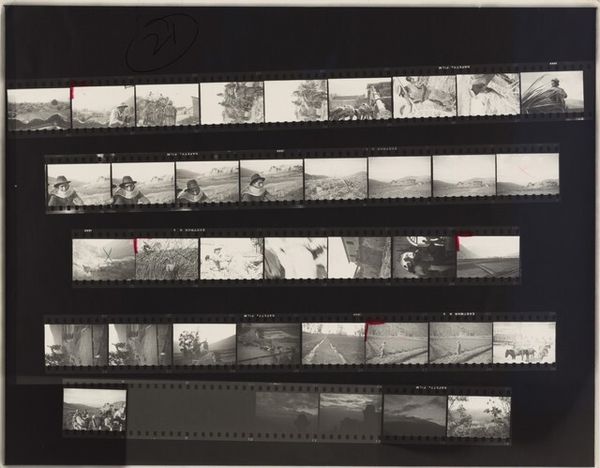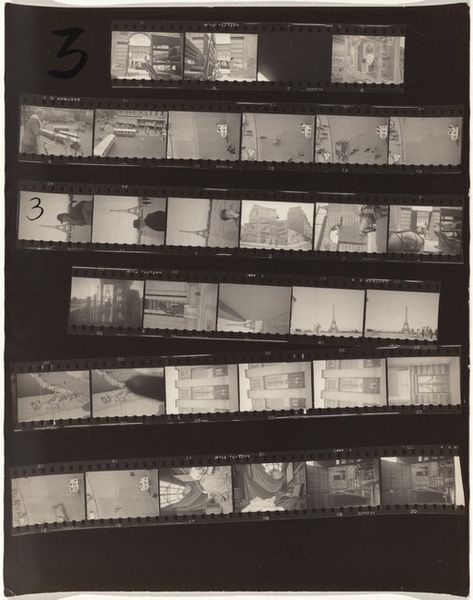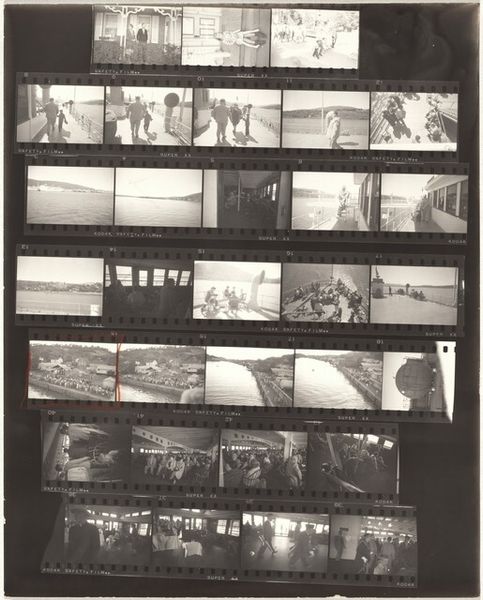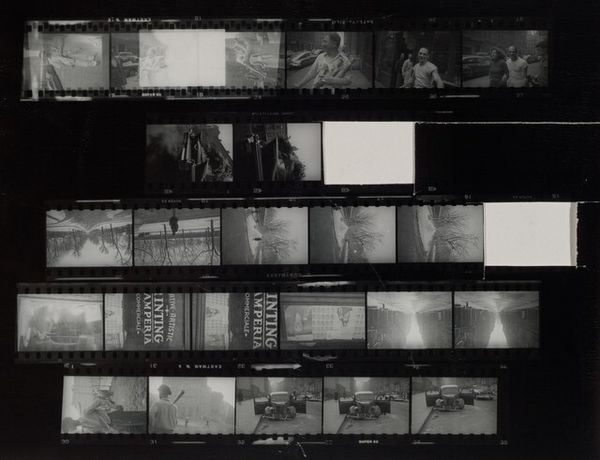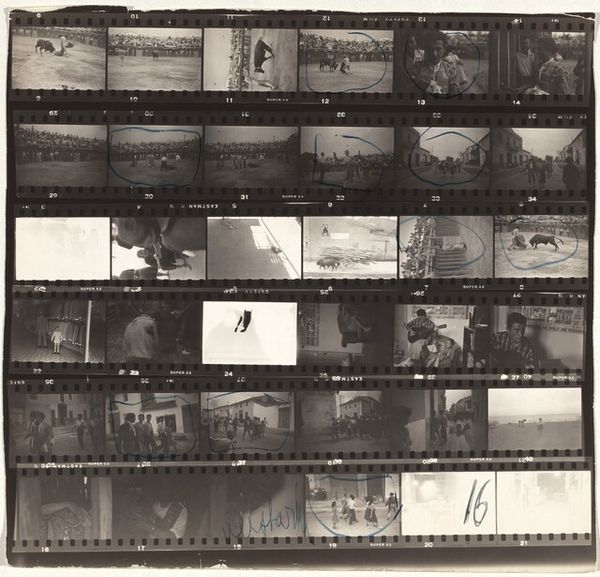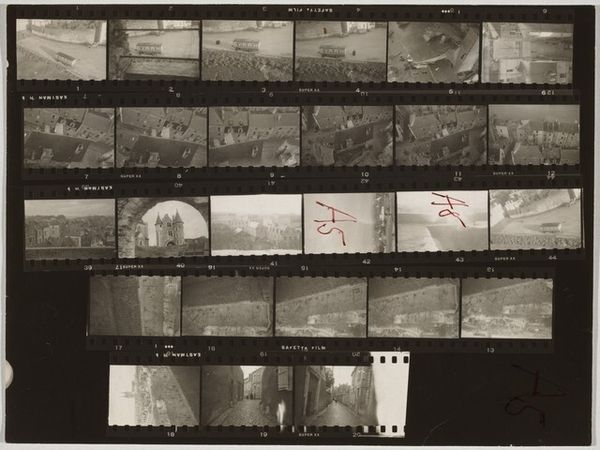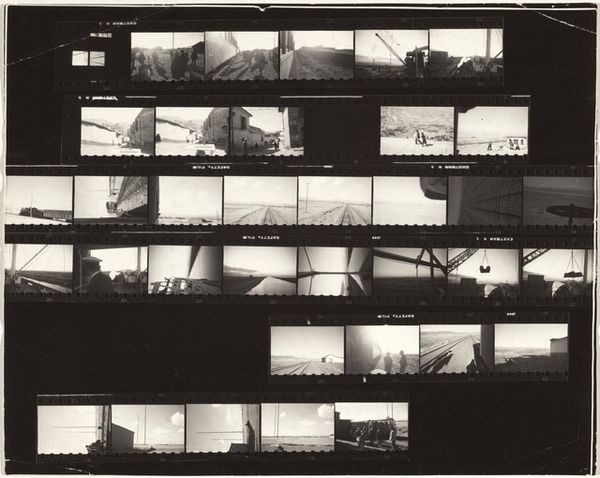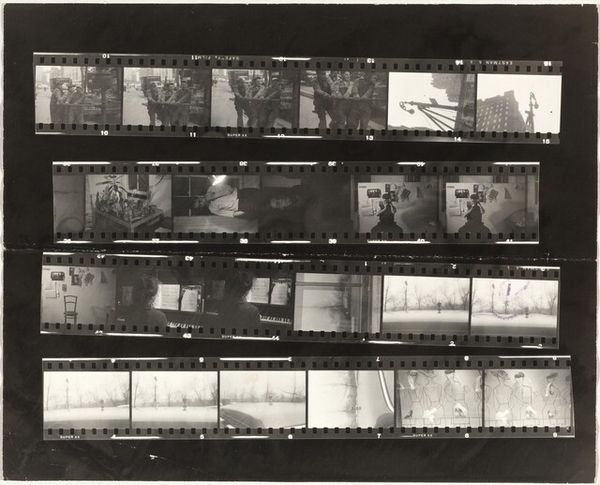
Dimensions: overall: 21.5 x 27.7 cm (8 7/16 x 10 7/8 in.)
Copyright: National Gallery of Art: CC0 1.0
Curator: We see a photographic contact sheet here; Robert Frank’s "America no number," circa 1950s. What strikes you about this object? Editor: It’s raw, almost like peeking behind the curtain of a final product. It shows the photographic process itself rather than just the perfected image. It makes me wonder about the context around its making, you know? How was this used, and what does the material tell us about Frank's practice? Curator: Exactly. Consider the labor involved: Frank’s travels across America, the act of taking the photos, developing the film, and then making this contact sheet. It is evidence of immense labor! The “no number” in the title points to this unfinished status and highlights the often-invisible processes of artistic creation. How does seeing this sheet, compared to seeing a single, perfected print, affect your understanding of Frank’s commentary on America? Editor: I suppose seeing this contact sheet highlights that Frank was making choices, actively constructing a narrative. Each frame offered a different perspective or emphasis. So much of the meaning isn't just in *what* he photographed, but *how* he then selected and presented these images from the strips. Curator: Precisely! We are reminded of the active role of the photographer as a worker selecting, reframing, and shaping the story. Consider how the aesthetic presentation of this material – its preservation on a physical contact sheet - shifts perceptions about its role. How might this affect perceptions about the boundary between photography and craft? Editor: It challenges it, absolutely! By showing us the ‘craft’ aspect of photography, it places value on labor, decision-making, and the physical process of production, things often hidden when we only view the 'artistic' final image. I now think of Frank's images as results of this physical, very human act of crafting and refining the narrative of America he wanted to portray. Thanks! Curator: Yes, considering materiality draws attention to those often-overlooked facets of art production, reframing discussions around what we value and why. It’s been insightful.
Comments
No comments
Be the first to comment and join the conversation on the ultimate creative platform.
